
The Serious Health Hazards of Heavy Metal Buildup
Why It’s A Lot More Common Than You Think & What You Can Do About it
Millions of people are dealing with heavy metal toxicity which is basically a “build up” of of heavy metals in the system that can lead to serious short and long term health implications, yet most don’t even know it.
A recent study from 2017 by Dr. Bruce P Lanphear showed that deaths in the US from even low-level lead and other heavy metal exposure could be under reported by 10x the real amount…TEN TIMES.
Source: 15(12):e2003066. doi: 10.1371/journal.pbio.2003066. eCollection 2017 Dec. Low-level toxicity of chemicals: No acceptable levels? Lanphear BP.
That study’s findings suggest that millions of people in North America could be dealing with heavy metal build up that is creating some level of real damage to their health and wellness, and in many cases can be actually life threatening.
Exposure to toxic heavy metals is now believed to be a potentially major contributing factor, if not a root cause, to many common symptoms including:
- Chronic fatigue
- heart disease
- Lung disease/COPD
- Chronic Pain
- Hormonal disturbances
- Serious Brain diseases
When heavy metal toxicity becomes severe it can even mimic symptoms associated with Alzheimer’s disease, Parkinson’s disease and multiple sclerosis.
Because heavy metal symptoms are so closely related to common aging issues (such as loss of memory and increased fatigue), many people blame getting older as the cause of their emerging symptoms, not realizing that heavy metal build up may be the major contributing factor.
What Are Heavy Metals?
 Heavy metals are naturally occurring elements that are found everywhere across the earth.
Heavy metals are naturally occurring elements that are found everywhere across the earth.
Certain heavy metals can be highly toxic and very dangerous even in low concentrations, the main ones include:
- Mercury
- Lead
- Arsenic
- Cadmium
These metals are referred to as “heavy” due their high atomic mass and their difficulty to be removed from both the environment and the human body.
The Most Dangerous Heavy Metals
1. Mercury
Human exposure to metallic mercury occurs primarily from breathing contaminated air.
Coal-fired power plants are currently the largest source of airborne mercury emissions in America.
Other forms of mercury poisoning include drinking contaminated water or eating contaminated food, particularly mercury contaminated fish.
Mercury is also very prevalent in cosmetics, lotions and fragrances.
The cosmetic industry has very little oversight or care when it comes to safe levels of toxic ingredients, especially when they are for topical use, because mercury can easily enter the body directly through skin contact.

Mercury is Also Prevalent In Seafood
Again, mercury itself is a naturally occurring element that is present throughout the environment and in plants and animals.
But human industrial activity (such as coal-fired electricity generation, smelting and the incineration of waste) ratchets up the amount of airborne mercury which eventually finds its way into lakes, rivers and the ocean, where it is gobbled up by unsuspecting fish and other marine life.
Once this mercury gets into the marine food chain, it “bioaccumulates” in the larger predators. That’s why larger fish are generally riskier to eat than smaller ones.
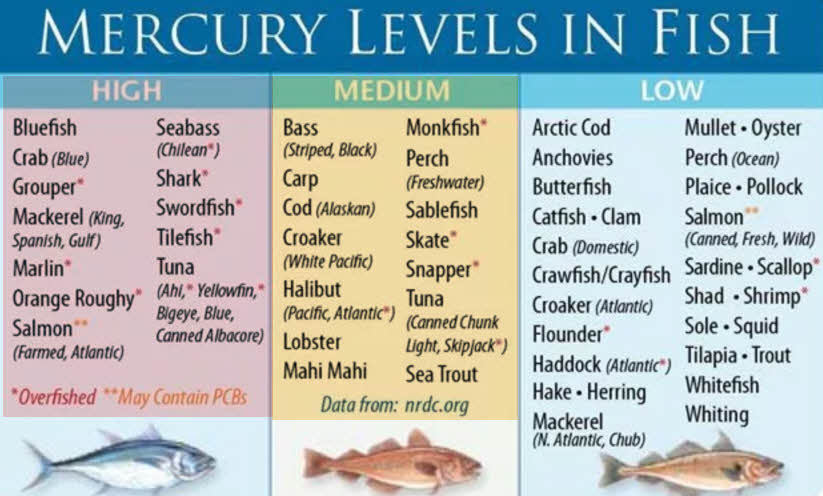

Impacts of Mercury Build-Up
Mercury is an element that can easily combine with other elements to form inorganic and organic mercury.
Exposure to elevated levels of metallic, inorganic and organic mercury can damage the kidney, brain and developing fetus and methyl mercury is highly carcinogenic.
Organic mercury is lipophilic in nature and thus can easily penetrate cell membranes. (Hello MSM!)
Mercury affects the nervous system and thus increased exposure of mercury can alter brain functions and lead to tremors, (even shyness, & irritability), memory problems and changes in hearing or vision.
Short-term exposure to metallic mercury vapors at higher levels can lead to vomiting, nausea, skin rashes, diarrhea, lung damage, high blood pressure, etc. while long-term exposure to organic mercury poisoning can lead to depression, tremors, headache, fatigue, memory problems, hair loss.
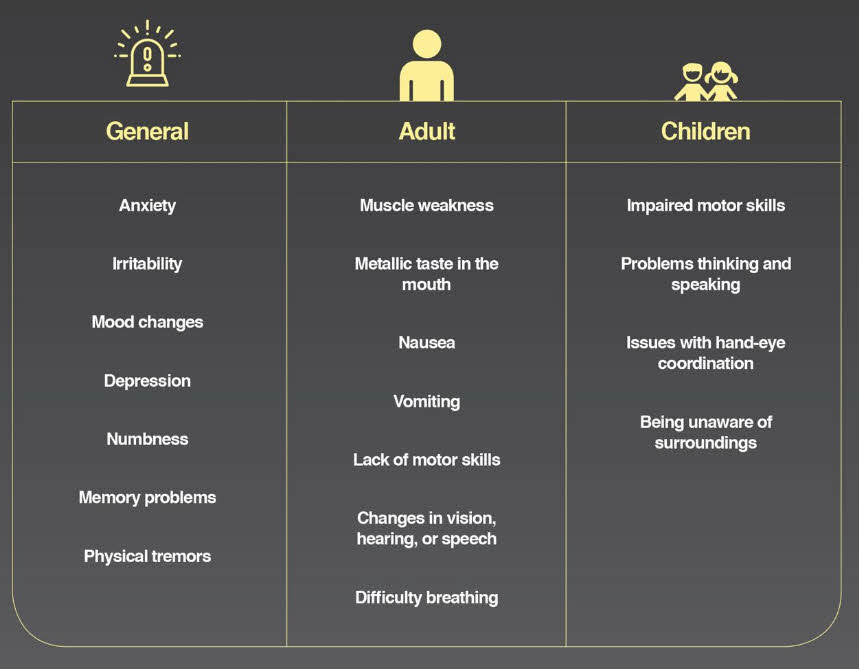
Lead
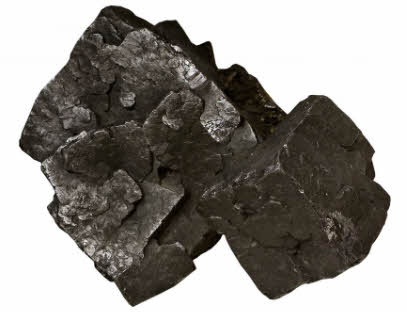
Lead-based paint and lead-contaminated dust in older buildings are the most common sources of lead poisoning in children.
Other sources include contaminated air, water and soil.
Adults who work with batteries, do home renovations or work in auto repair shops also might be exposed to lead consistently.
Common Lead Sources
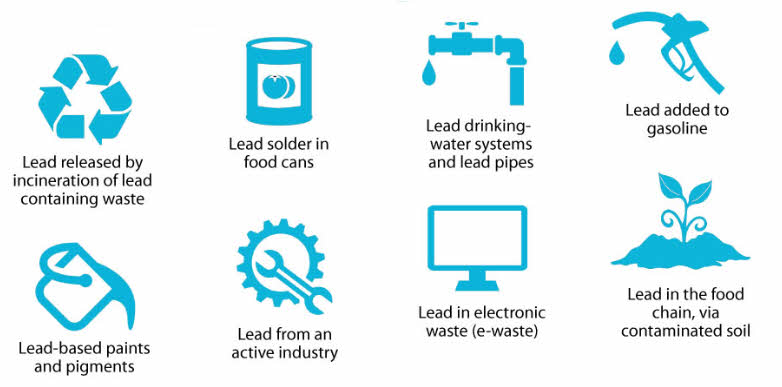

Acute exposure of lead can cause headache, loss of appetite, abdominal pain, fatigue, sleeplessness, hallucinations, vertigo, renal dysfunction, hypertension and arthritis.
Chronic exposure can result in birth defects, mental retardation, autism, psychosis, allergies, paralysis, weight loss, dyslexia, hyperactivity, muscular weakness, kidney damage, brain damage, coma and may even cause death.
Impacts of Lead Build-Up
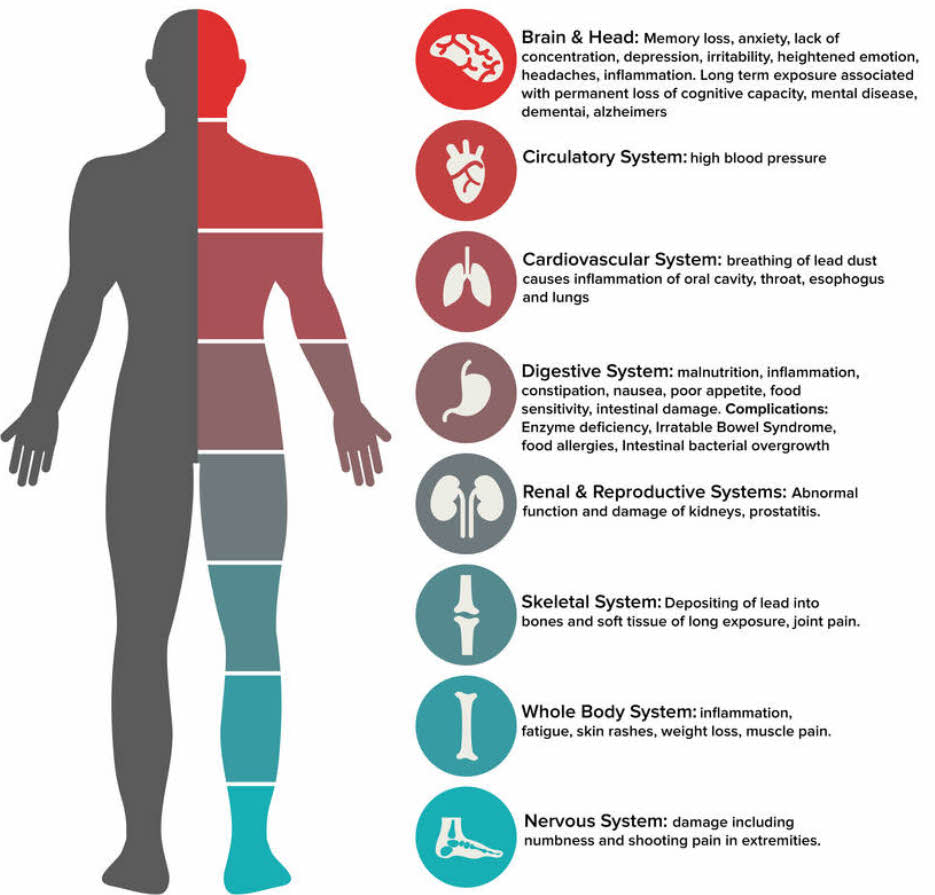
Arsenic
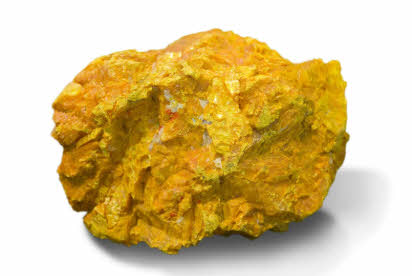
Arsenic is a natural component of the earth’s crust and is widely distributed throughout the environment in the air, water and land. It is highly toxic in its inorganic form.
People are exposed to elevated levels of inorganic arsenic through drinking contaminated water, using contaminated water in food preparation and irrigation of food crops, industrial processes, eating contaminated food and smoking tobacco.
Sources of Arsenic
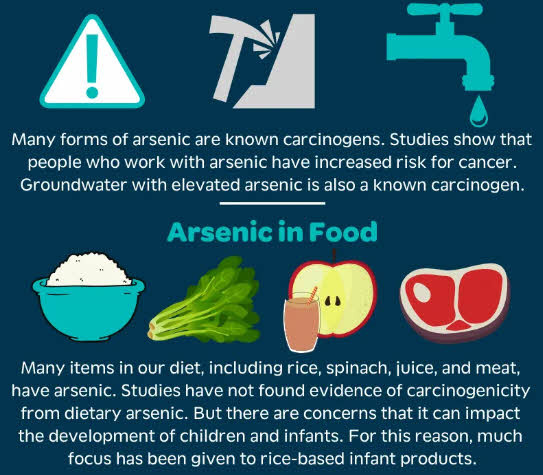

Impacts of Arsenic Build-Up
Acute arsenic build up can lead to the destruction of blood vessels, gastrointestinal tissue and can affect the heart and brain.
Chronic arsenic toxicity which is termed arsenicosis usually focus on skin manifestations such as pigmentation and keratosis.
Chronic arsenic exposure can promote the development of a number of cancers which include skin cancer, cancers of the bladder, lung, liver (angiosarcoma), and possibly the colon and kidney cancers.
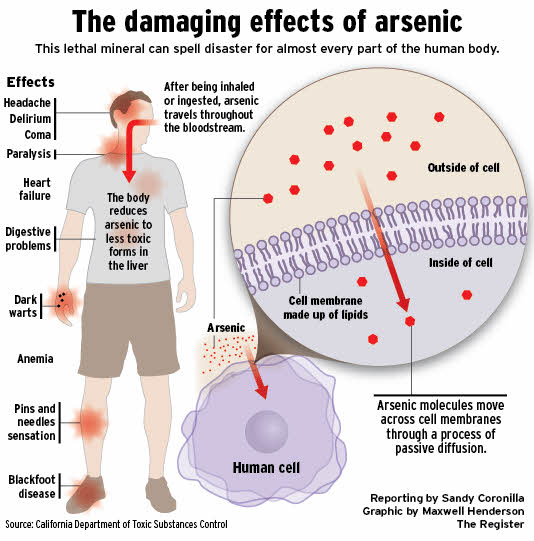
Cadmium
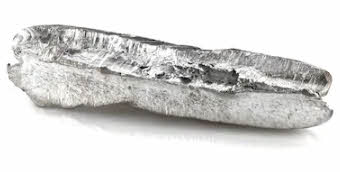
In the general population, exposure to cadmium occurs primarily by eating certain foods if grown in contaminated soil.
The food groups that contribute most of the dietary cadmium exposure are cereals and cereal products, vegetables, nuts and pulses, starchy roots or potatoes, and meat and meat products.
Due to their high consumption of cereals, nuts, oil seeds and pulses, vegetarians have a higher dietary exposure.
Cigarette smoke is also one of the highest sources of cadmium exposure.
Main Sources of Cadmium
- Cadmium is used as an electrode in “nicad” batteries
- Cadmium is used as a pigment in paints (yellow color)
- It is also used in photovoltaic devices and in TV screens
- Fertilizers and pesticides
- The greatest proportion of exposure to cadmium comes from our food supply – seafood, organ meats, particularly kidneys, and also from potatoes, rice, and other grains.

Impacts of Cadmium Build-Up
The health effects of cadmium exposure are exacerbated due to the inability of the human body to excrete cadmium.
In fact, cadmium is re-absorbed by the kidney thereby limiting its excretion.
Short-term exposure to inhalation of cadmium can cause severe damages to the lungs and respiratory irritation while its ingestion in higher dose can cause stomach irritation resulting to vomiting and diarrhea.
Long-term exposure to cadmium leads to its deposition in bones and lungs. As such, cadmium exposure can cause bone and lung damage. Cadmium can cause bone mineralization as studies on animals and humans have revealed osteoporosis (skeletal damage) due to cadmium.
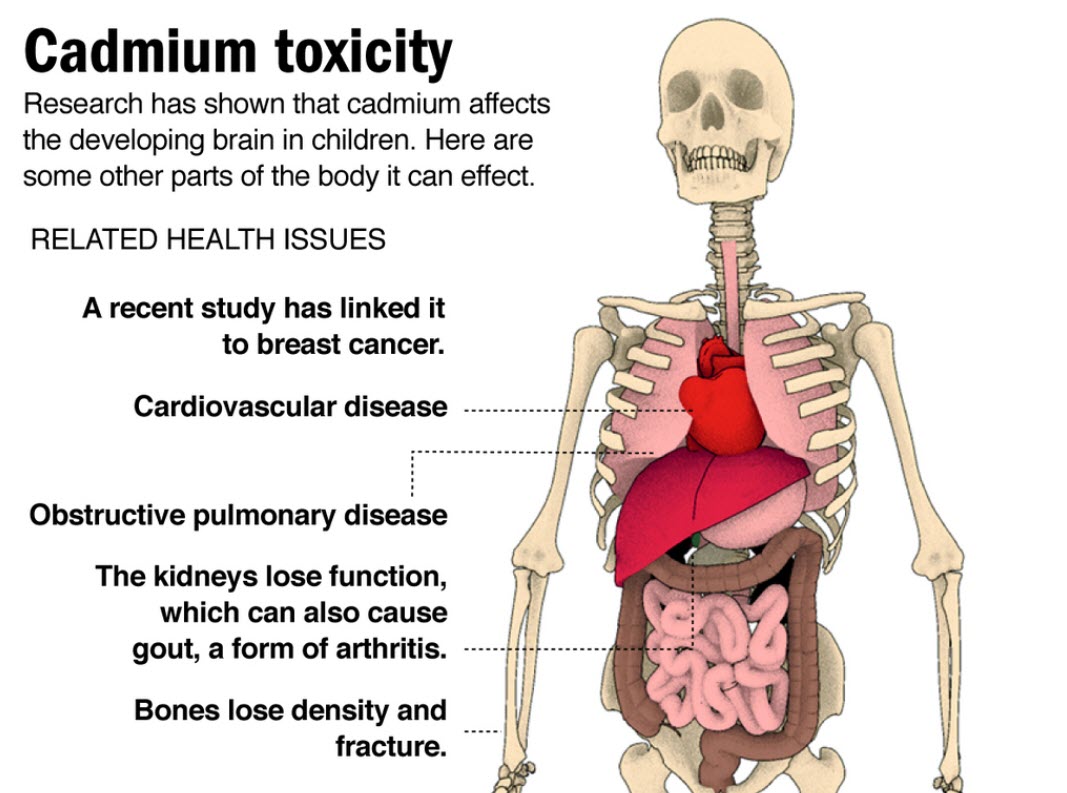
How Common is Heavy Metal Exposure?

Believe it or not, heavy metals are very common in our environment.
We get daily exposure from environmental pollutants, such as traffic fumes, air pollution, food contaminants, cigarette smoke or natural radiation.
Certain dental work like having metal amalgam dental fillings are shown to release mercury into the body.
Eating certain foods for example, eating farm-raised fish that carry high levels of mercury.
Bioaccumulation of heavy metals is a serious issue especially when it comes to consuming highly toxic heavy metals like mercury.
With seafood, the larger the fish, the more concentrated the mercury toxicity can be.
A diet that includes processed foods, especially those that are imported from foreign countries and not organically grown (and even plant foods grown in soil that has high levels of metals) can also be a contributing factor.
Drinking water that is contaminated with trace amounts of metals.
From birth (heavy metals can be passed down in utero from mother to her offspring).
Exposure to substances that carry lead, such as some chocolates, canned foods, toothpastes, old paints, insecticides, ceramic and some pottery, and soldered pipes.
Exposure or use of household substances that carry mercury, such as adhesives, air condition filters, cosmetics, fabric softeners, felt, floor waxes and polishes, and talcum powder.
Use or exposure to other household items, such as antiperspirants, baking powder, certain baby formulas, plastic toys, antacids, aluminum foil, certain metal pots and pans, stainless steel cutlery, coins, and some makeup.
How Do Heavy Metals Build Up in the Body?
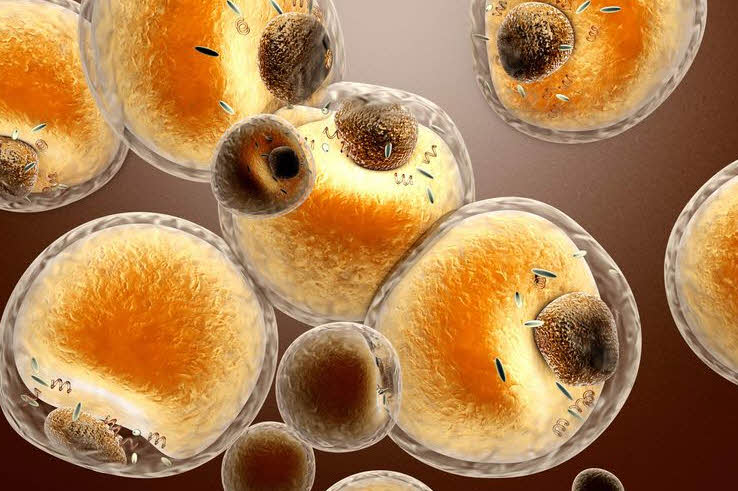
Heavy metals are really problematic because over time, they can accumulate within bodily tissues, often without the person who is affected even realizing this is happening.
There is virtually no way to entirely avoid heavy metal exposure, considering metals are natural elements found all over the world in the food supply, water and ground.
Researchers have identified that exposure to at least 23 different heavy metals that can contribute to acute or chronic toxicity.
These metals are described as being heavy because they stick around in the body, especially hiding out in adipose tissue (fat cells).
How Heavy Metals Build Up
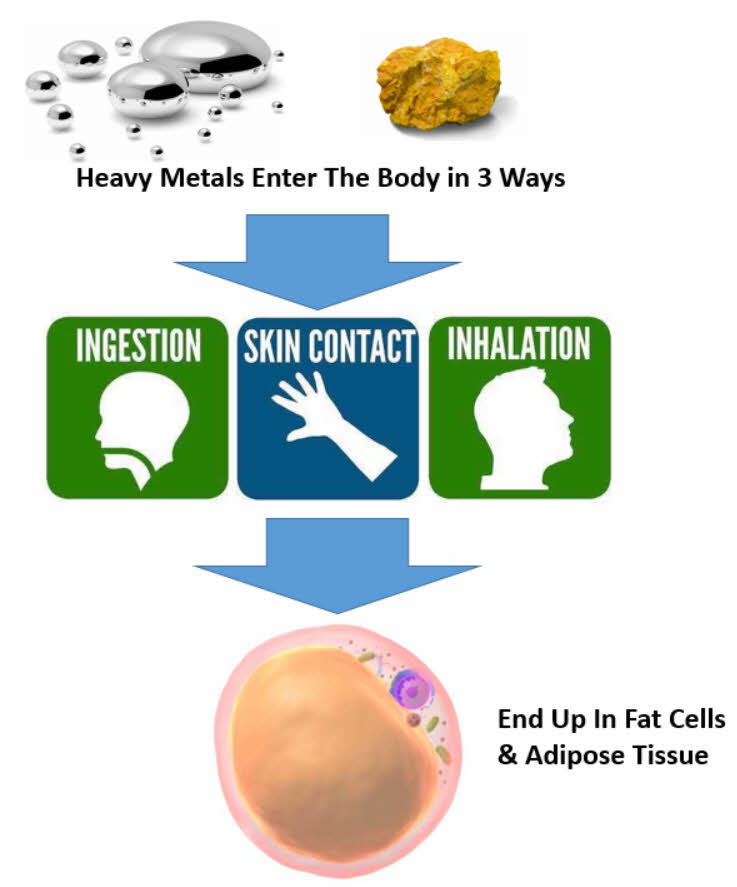
They are difficult to get rid of, making them similar to fat-soluble toxins.
Our body fat tries to protect the organs by trapping certain substances inside, including some metals, which causes them to linger.
This is one reason heavy metal detoxing can sometimes result in weight loss, as fat cells shrink after releasing dormant toxins.
The Most Common Signs & Symptoms
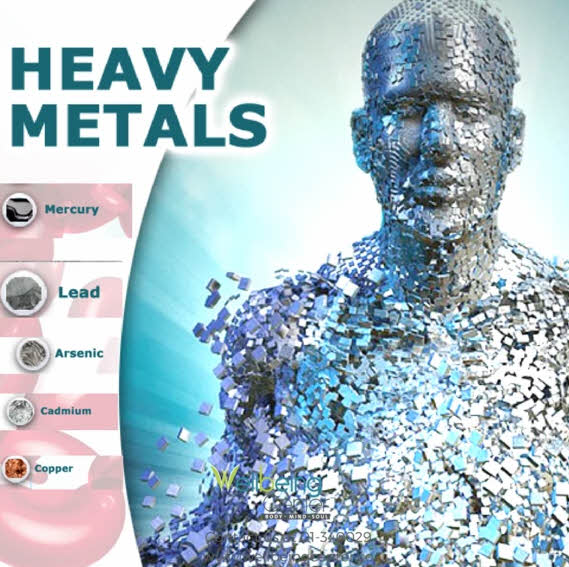
As we showed you above, some of the most common warning signs that you might be struggling with may be a result of heavy metal toxicity and can include:
- Chronic fatigue
- Autoimmune diseases, including mimicking Lyme’s disease
- Poor recovery from exercise and weakness
- Skin irritation
- Series Neurological disorders
- Brain-fog, trouble concentrating, difficulty learning and poor memory
- Depression, manic depression and/or anxiety
- Dementia
- Insomnia
- Digestive issues, such as IBS (irritable bowel syndrome)
- Chronic aches and pains, such as those associated with fibromyalgia
- Tremors & impaired motor control, hearing, speech, vision and gait
- Anemia
- Higher risk for heart attacks
- Lung issues similar to that of COPD
Heavy metal toxicity can either have acute or chronic effects. They can damage and alter the functioning of organs such as the brain, kidney, lungs, liver, and blood.
Long-term exposure of the body to heavy metal can progressively lead to muscular, physical and neurological degenerative processes that are similar to diseases such as Parkinson’s disease, multiple sclerosis, muscular dystrophy and Alzheimer’s disease.
For children, the effects of heavy metal toxicity can impair them cognitively and cause permanent damage to their brain and nervous system,
Obviously it can be hard with a list that long to determine exactly what could be heavy metal toxicity or something else.
The key here is that heavy metal build up is not beneficial in any way and there are things you should do to limit build up.
How To Get Heavy Metals Out of Your Body
A heavy metal detox aims to remove excess heavy metals from the body.
A substance that binds to heavy metals is known as a “chelator”, and the process that transports them out of the body is called chelation.
MSM is an excellent chelator as it helps the body with deep chelation.
People may also refer to a heavy metal detox as chelation therapy.
Doctors use specific chelator medications, supplements or herbs to treat heavy metal poisoning.
The Basic Benefits of Chelation

Certain foods can also help move heavy metals out of the body.
If someone has reason to believe that they have had excessive exposure to metals, they should seek medical testing by speaking with their doctor or integrative practitioner/naturopath.
Heavy metal testing in the form of hair analysis or a blood test is now widely available and is very useful for confirming suspected toxicity.
Even if you choose not to be tested for toxicity, having some form of daily chelation is very beneficial to long term health and wellness. Some take detox drinks daily, others use MSM daily, and some use herbal combinations to help shield and protect the body.
Benefits of a heavy metal detox can include:
- Reduced free radical damage/oxidative stress
- Reduced pain & inflammation
- Improvements in energy levels
- Enhanced immunity and gut health
- Better digestive function
- Improvements in mental performance (attention, memory, learning, etc.)
- Improved cellular and hormonal function
- Improved arterial and heart health
- Improved lung function
- Better protection against diseases cognitive disorders and autoimmune disease
Organic Sulfur Is Considered a 5 Star Detoxifier
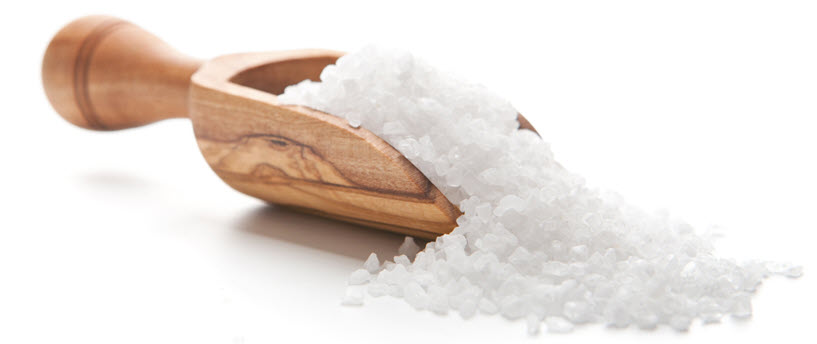
“MSM is critical for detoxification… It binds to toxins such as heavy metals and directs them out of your body through your stool. MSM also aids in detoxification by increasing the permeability of your cells allowing them to flush out toxins and bring in nutrients more easily.”
-Doctor Jesse Chappus
Organic Sulfur (pure MSM) is among the most popular tools for detoxing heavy metals, and helps the body do it in 3 key ways:
1. It Removes Toxins from Cells
In our bodies, Organic Sulfur helps facilitate the detoxification process by making cells more permeable, which helps cells quickly release built up heavy metals, waste and toxins.
This process also makes it much easier for nutrients and water to enter the cells and continue the cleansing & healing process.
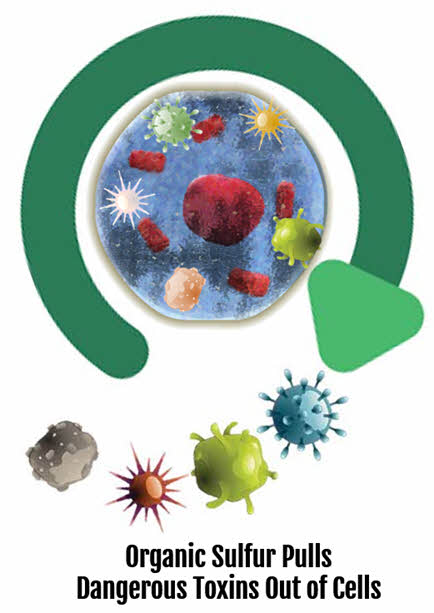
2. It Binds to Heavy Metals
Methylsulfonylmethane (MSM) is highly effective in rummaging through the blood seeking out and binding heavy metals.
Because of its molecular structure MSM readily bonds with most other chemicals; and thus removes heavy metals and other toxins from the body.

3. It Helps The Body Build Glutathione
The sulfur contained in MSM is also an important factor in the production of glutathione, the body’s “master antioxidant” and potent detoxifier.
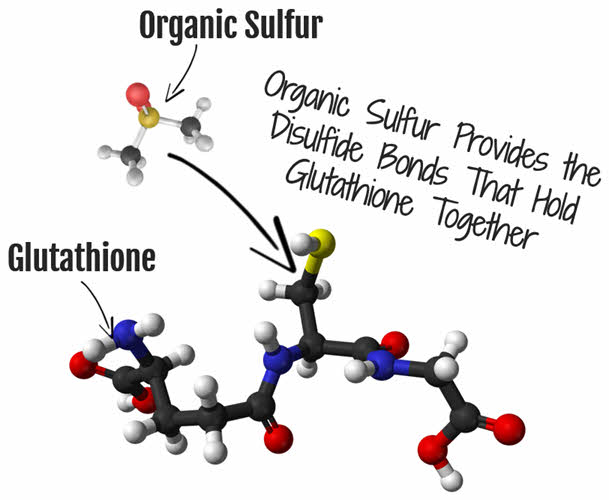
How To Detox With Diet
Other ways to detox the body of heavy metals include making dietary changes and using herbs to break down metals into smaller molecules so they can be removed from urine, feces, sweat and even the breath.

Foods to eat while doing a heavy metal detox include:
Leafy Green Veggies
Greens are some of the most powerful heavy metal detox foods.
Try to have some type of bitter greens each day, such as kale, swiss chard, dandelion greens, mustard greens, arugula, spinach or beet greens. Broccoli sprouts are another great food for providing antioxidants and reducing inflammation.
Herbs and Spices
Anti-inflammatory, antioxidant herbs and spices like basil, parsley, oregano, rosemary, thyme, ginger, turmeric, cinnamon and cilantro can help remove heavy metals.
Cilantro (along with other green herbs and plants) is one of the best herbs for detoxifying and can help reduce the buildup of heavy metals like mercury and lead in the body. Try adding herbs like cilantro and parsley to fresh-squeezed green juices.
Foods Rich in Vitamin C
Fruits and vegetables rich in vitamin C can reduce the damage caused by heavy metal toxicity by acting as an antioxidant.
High-vitamin C foods include citrus fruits like oranges or grapefruit, leafy greens like spinach and kale, all types of berries, broccoli and cruciferous veggies, kiwi, papaya, guava and bell pepper.
Garlic and Onions
These vegetables naturally contain some sulfur (the same type as in Organic Sulfur) which if eaten organically and raw, can help your liver detoxify itself of heavy metals like lead and arsenic. the only challenge is you would have to eat lots.
Flax and Chia Seeds
These provide omega-3 fats and fiber that can help with detoxification of the colon and reduce inflammation.
Bone Broth
Bone broth helps to keep you hydrated, provides important mineral, and supports liver health by providing glutathione.
It also provides amino acids that help strengthen the organs. Consume bone broth by either making your own and sipping on several cups daily, or by using protein powder made from bone broth.
Water
Drink 8 ounces of water or vegetable juice every two hours to stay hydrated and help flush out toxins.

Other Supplements & Tools That Can Help
Chlorella
(1-4 grams per day, or about 4-8 caps daily) — Chlorella is a type of green algae that acts as a natural chelator to remove heavy metals, especially lead and mercury. It’s a great source of chlorophyll and is “hungry” to absorb other metals. You can take it in powder or tablet form.
Vitamin C (3000 milligrams daily) — Acts as an antioxidant to help reduce free radicals.
Cilantro (preferably taken as a tincture 2x per day)
Shilajit
(between 100-500 milligrams daily, typically in powder form) — Shilajit is an adaptogenic plant that has certain things in common with activated charcoal, especially that it contains a lot of carbon. It’s a natural chelator because it contains fulvic acid and humic acid that bind to toxic molecules.
Milk Thistle
(150 milligrams taken 2x daily, or milk thistle tea 1-3 times daily) — This is one of the most popular herbs for detoxifying the liver. Silybin is a component with the greatest degree of biological activity that has strong antioxidant properties.
It may act as a toxin blockade agent by inhibiting binding of toxins to cell membrane receptors.
Silymarin has been shown to reduce liver injury and is used to treat alcoholic liver disease, acute and chronic viral hepatitis and toxin-induced liver diseases.
Probiotics
(50 billion units one time daily) — Can help improve detoxification of the gut and help boost immunity.
Bentonite Clay
Due to its poly-cationic nature, bentonite clay leads to absorption of negative charge toxins.
Most clays are meant for topical use only (they are not meant to be ingested). However, some high-quality, organic clays can be used internally, although you need to be very careful about doing this (contact the manufacturer to ask if it’s safe to consume the clay).
Historically, many cultures ate clay to obtain minerals and help cleanse their bodies of parasites and other microbes. If you do want to use clay internally, mix 1/2 teaspoon with water, shake to combine and take once daily.
Triphala
Triphala is a a traditional Ayurvedic herbal formulation made from the dried powder of three different fruits that contain the strong antioxidants called gallic acid, ellagic acid and chebulinic acid.
Triphala has antibacterial, anti-inflammatory and anti-diarrheal abilities.
Consuming triphala can help to cleanse the digestive tract, relieve constipation and produce regular bowel movements, which are important for removing metals, bacteria, and excess fatty acids from the body. It can be consumed in tea form, powder form, as liquid tincture or in capsule form. Take it on an empty stomach, ideally about two hours before bedtime.
CMP MAX Cream
Chelation and detoxification can lead to temporary symptoms including headaches, minor skin irritations, rashes and achy joints.
Happy Body’s CMP Max Topical cream is a powerful, all natural support that is fast acting at alleviating the symptoms of detoxification.
It can be used on the temples and neck to relieve headaches, applied to achy joints and sore muscles, and can even be used to soothe dry, itchy, irritated skin.
Serious Detoxes Can Lead To a “Herx”
The Herxheimer (“Herx”) Reaction is an immune system reaction to the toxins (endotoxins) that are released when large amounts of pathogens are being killed off, and the body does not eliminate the toxins quickly enough.
Simply stated, it is a reaction that occurs when the body is detoxifying and the released toxins either exacerbate the symptoms being treated or create their own symptoms.
The important thing to note is that worsening symptoms do not indicate failure of the treatment in question; in fact, usually just the opposite.
The most common Herxheimer reactions are:
- Headache
- Flu-like symptoms
- Itch and rashes
- Flushes
Usually, the reaction lasts a few days. In more severe cases, reactions can last a week or more.
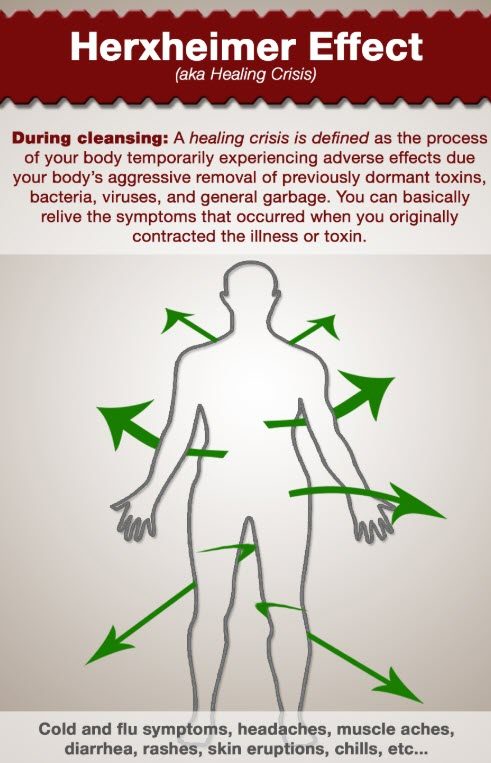
In most cases, the reaction tends to be mild and barely noticeable, but there are exceptions, particularly in cases of severe infection.
Herx reactions vary widely, depending on many factors, including the general health of the individual, the condition being treated, the degree of toxicity that exists in the body, and the support the body is provided in eliminating the toxins as rapidly as possible.
The severity of the Herx reaction is often an indicator of just how much toxicity there was in the body to begin with and is an indicator of the effectiveness of the treatment.
It is actually a sign that the body is restoring itself to good health.
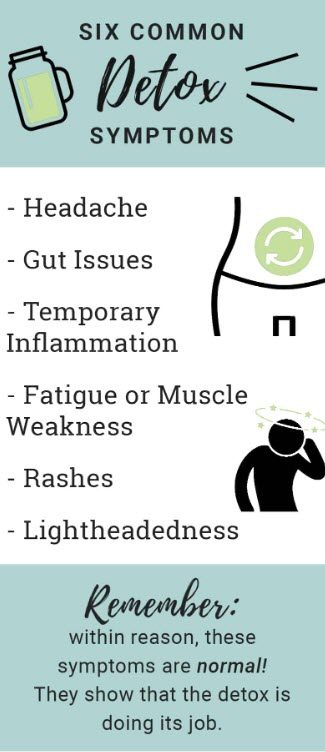
Some Heavy Metal Detox Drink Recipes
Detox drinks and recipes can help to naturally reduce inflammation, boost energy, support digestion, cleanse the liver and promote gut health.
Detox drinks are especially useful for providing raw vegetables, fruits and herbs that stimulate detoxification while providing vitamins and minerals.
Many detox drinks can be made with ingredients you already have at home, like lemon juice, apple cider vinegar, cucumbers, leafy greens, berries, ginger, herbs or melon, but adding Organic Sulfur will increase the antiinflammatory and detoxification properties.
You can also make detoxifying MSM lemon water drinks, which you can sip on throughout the day.

- 1 cup frozen mango
- 1 green apple or pear
- 1 lemon peeled
- 1 large handful of spinach
- 1 large handful of kale
- 1 small handful of cilantro
- 2 dates pitted
- 1 thumb of ginger
- 1 teaspoon of chlorella
- 1 teaspoon Happy Body Organic Sulfur Crystals
- 2 cups coconut water depending on desired consistency
Whiz together in high powered blended until combined and smooth.
PURPLE POWER DETOX SMOOTHIE

- 2 organic bananas
- 2 cups organic wild blueberries
- 1 cup organic cilantro
- 1 teaspoon Happy Body Organic Sulfur Crystals
- 1 cup organic orange juice (freshly squeezed)
- 1 teaspoon barley grass juice powder
Whiz together in high powered blended until combined and smooth.
LEMON CUCUMBER DETOX WATER

- 10 cups Filtered Water
- 2 Organic Lemons (sliced into rounds)
- 1/2 Organic Cucumber (sliced into rounds)
- 2 teaspoon Happy Body Organic Sulfur Crystals
In a large jug, stir Organic Sulfur crystals into water until fully dissolved. Add lemons and cucumber slices and steep for at least 20 minutes.
Consume this water throughout the day. Drink daily to keep the system flushed and cleansed.
Bottom Line

While avoiding the daily onslaught of heavy metals and other toxins is not easy, protecting your body from these threats can be.
You can take a stand against your personal blend of toxic heavy metals!
The truth is, your body wants to heal, and it is working for you every day.
All you need to do is give it the tools and resources it needs to begin the healing process.
Start by assembling your all-star team of heavy metal detoxifiers, whether its a combination of supplements and foods, or detox drinks.
The nice thing about Organic Sulfur, is that for many it can truly provide a great shield from heavy metals on its own merits and actions in the body.
By taking advantage of these simple tips, you can help your body reclaim the better long and short term health that you deserve—and are meant to have.
As always, to your wellness!
The Happy Body Team!
BIG Discounts On Multi Packs On Now!
Multi Packs Start At Just 2 Units!
Questions or Want To Order?
Get In Touch 9:00am – 4:30pm EST (New York Time)
Remember, if we are unable to answer your call, leave a message we WILL call you back asap.
Questions or Want To Order?
Get In Touch 9:00am – 4:30pm EST (New York Time)
Remember, if we are unable to answer your call, leave a message we WILL call you back asap.
Article Research Credits:
- 1. Kaur J. A comprehensive review on metabolic syndrome. Cardiology research and practice. 2014;2014:943162.
- 2. Aguilar M, Bhuket T, Torres S, Liu B, Wong RJ. Prevalence of the metabolic syndrome in the United States, 2003–2012. JAMA. 2015 May 19;313(19):1973–4.
- 3. Ogden CL, Carroll MD, Fryar CD, Flegal KM. Prevalence of Obesity Among Adults and Youth: United States, 2011–2014. NCHS data brief. 2015 Nov;(219):1–8.
- 4. De Long NE, Holloway AC. Early-life chemical exposures and risk of metabolic syndrome. Diabetes, metabolic syndrome and obesity: targets and therapy. 2017;10:101–9.
- 5. Thayer KA, Heindel JJ, Bucher JR, Gallo MA. Role of environmental chemicals in diabetes and obesity: a National Toxicology Program workshop review. Environ Health Perspect. 2012 Jun;120(6):779–89.
- 6. Roy C, Tremblay PY, Ayotte P. Is mercury exposure causing diabetes, metabolic syndrome and insulin resistance? A systematic review of the literature. Environmental research. 2017 Jul;156:747–60.
- 7. Tinkov AA, Filippini T, Ajsuvakova OP, Aaseth J, Gluhcheva YG, Ivanova JM, et al. The role of cadmium in obesity and diabetes. The Science of the total environment. 2017 Dec 01;601–602:741–55
- 8. Li Y, Zhang Y, Wang W, Wu Y. Association of urinary cadmium with risk of diabetes: a meta-analysis. Environmental science and pollution research international. 2017 Apr;24(11):10083–90.
- 9. Kuo CC, Moon K, Thayer KA, Navas-Acien A. Environmental chemicals and type 2 diabetes: an updated systematic review of the epidemiologic evidence. Current diabetes reports. 2013 Dec;13(6):831–49.
- 10. Thevenod F, Lee WK. Toxicology of cadmium and its damage to mammalian organs. Metal ions in life sciences. 2013;11:415–90.
- 11. Jomova K, Valko M. Advances in metal-induced oxidative stress and human disease. Toxicology. 2011 May 10;283(2–3):65–87.
- 12. Gundacker C, Gencik M, Hengstschlager M. The relevance of the individual genetic background for the toxicokinetics of two significant neurodevelopmental toxicants: mercury and lead. Mutation research. 2010 Oct;705(2):130–40. 1
- 13. Moon SS. Association of lead, mercury and cadmium with diabetes in the Korean population: the Korea National Health and Nutrition Examination Survey (KNHANES) 2009–2010. Diabetic medicine: a journal of the British Diabetic Association. 2013 Apr;30(4):e143–8.
- 14. Simic A, Hansen AF, Asvold BO, Romundstad PR, Midthjell K, Syversen T, et al. Trace element status in patients with type 2 diabetes in Norway: The HUNT3 Survey. Journal of trace elements
Disclaimer: Information presented on this site is of a general nature used for educational and information purposes only, it should NEVER be used as medical advice or as a basis for self diagnosis. Statements or opinions about products and health conditions have not been evaluated by the US Food and Drug Administration (The FDA). Products and information stated herein are not intended to diagnose, treat, cure, or prevent any disease or condition. If you have any concerns about your own health or are wanting to use a new mineral supplement, vitamin or herbal supplement, you should always consult with your physician or other healthcare professional first. This is the same for your pet, always first consult with your veterinarian before using any new pet supplement or vitamin first.

